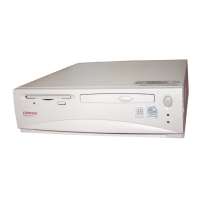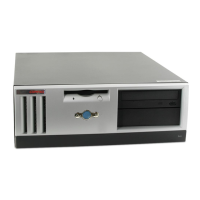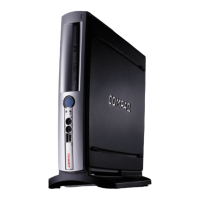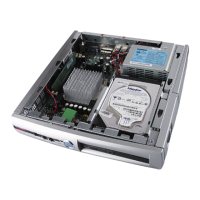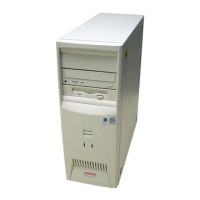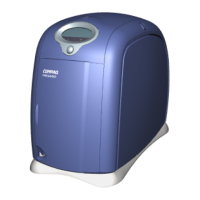2-12 Hardware Upgrades
Compaq Confidential - Need to Know Required
Writer: Kristen Cover Part Number: 178147-002 File Name: e-UpgradesCMT.doc
Last Saved On: 08/21/00 8:40 AM Last Saved By: Martha Rockecharlie
Installing Additional Memory
Depending on the model, the computer comes with:
■ Synchronous dynamic random access memory (SDRAM) dual
inline memory modules (DIMMs)
■ Direct Rambus dynamic random access memory (RDRAM)
Rambus inline memory modules (RIMMs)
DIMMs
The memory sockets on the Intel 815E chipset–based system board
can be populated with industry-standard DIMMs. These memory
module slots are populated with at least one preinstalled memory
module. To achieve the maximum memory support, you may be
required to replace the preinstalled DIMM with a higher capacity
DIMM.
For proper system operation, the DIMMs must be industry-standard
168-pin, unbuffered PC100– or PC133– compliant SDRAM DIMMs,
depending on the model. The SDRAM DIMMs must support CAS
Latency 2 or 3 (CL = 2 or CL = 3). They must also contain the
mandatory Joint Electronic Device Engineering Council (JEDEC)
Serial Presence Detect (SPD) information. DIMMs constructed with
x4 SDRAM are not supported; the system will not start using
unsupported DIMMs.
The Intel 815E chipset supports both PC100 and PC133 SDRAM
DIMMs. PC133 DIMMs should be used for optimal operation. If both
PC100 and PC133 SDRAM DIMMs are installed in a computer, the
system memory will run at the lower 100Mhz speed. Some
configurations of PC133 SDRAMs may run at 100Mhz, instead of
133Mhz.
